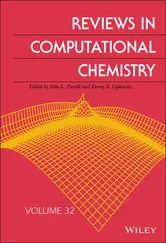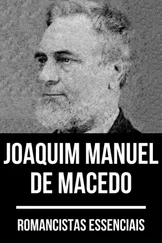Manuel Pastor - Computational Geomechanics
Здесь есть возможность читать онлайн «Manuel Pastor - Computational Geomechanics» — ознакомительный отрывок электронной книги совершенно бесплатно, а после прочтения отрывка купить полную версию. В некоторых случаях можно слушать аудио, скачать через торрент в формате fb2 и присутствует краткое содержание. Жанр: unrecognised, на английском языке. Описание произведения, (предисловие) а так же отзывы посетителей доступны на портале библиотеки ЛибКат.
- Название:Computational Geomechanics
- Автор:
- Жанр:
- Год:неизвестен
- ISBN:нет данных
- Рейтинг книги:4 / 5. Голосов: 1
-
Избранное:Добавить в избранное
- Отзывы:
-
Ваша оценка:
- 80
- 1
- 2
- 3
- 4
- 5
Computational Geomechanics: краткое содержание, описание и аннотация
Предлагаем к чтению аннотацию, описание, краткое содержание или предисловие (зависит от того, что написал сам автор книги «Computational Geomechanics»). Если вы не нашли необходимую информацию о книге — напишите в комментариях, мы постараемся отыскать её.
Computational Geomechanics: Theory and Applications, Second Edition
Computational Geomechanics — читать онлайн ознакомительный отрывок
Ниже представлен текст книги, разбитый по страницам. Система сохранения места последней прочитанной страницы, позволяет с удобством читать онлайн бесплатно книгу «Computational Geomechanics», без необходимости каждый раз заново искать на чём Вы остановились. Поставьте закладку, и сможете в любой момент перейти на страницу, на которой закончили чтение.
Интервал:
Закладка:
2.5 Alternative Derivation of the Governing Equation (of Sections 2.2– 2.4) Based on the Hybrid Mixture Theory
It has already been indicated in Section 2.1that the governing equations can also be derived using mixture theories. The classical mixture theories (viz. Green 1969; Morland 1972; Bowen 1980, 1982) start from the macro‐mechanical level, i.e. the level of interest for our computations, while the so‐called hybrid mixture theories (viz. Whitaker 1977; Hassanizadeh and Gray 1979a, 1979b, 1980) start from micro‐mechanical level. The equations at the macro‐mechanical level are then obtained by spatial averaging procedures. Further, there exists a macroscopic thermodynamical approach to Biot’s theory proposed by Coussy (1995). All these theories lead to a similar form of the balance equations. This was in particular shown by de Boer et al. (1991) for the mixture theory, the hybrid mixture theories and the classical Biot’s theory.
The theories differ in the constitutive equations, usually obtained from the entropy inequality. This is here shown in particular for the effective stress principle because this was extensively discussed in Chapter 1. Let’s consider first the fully saturated case. Runesson (1978) shows, for instance, that the principle of effective stress follows from the mixture theory under the assumption of incompressible grains. This means that α in Equation (1.16a) or ( 2.1a)
(2.45a) 
has to be equal to one, which results in
(2.45b) 
Only in this case, the two formulations given by Biot’s theory and the mixture theory coincide.
In the hybrid mixture theories, the concept of the solid pressure p s, i.e. the pressure acting on the solid grains is introduced (viz. Hassanizadeh and Gray 1990). From the application of the second principle of thermodynamics, it appears that under conditions close to thermodynamic equilibrium
(2.46) 
where  is a coefficient and θ sand θ wthe absolute temperatures of solid and water, respectively. Under the assumption of local thermodynamic equilibrium, where temperatures are equal and rate terms vanish, it follows that
is a coefficient and θ sand θ wthe absolute temperatures of solid and water, respectively. Under the assumption of local thermodynamic equilibrium, where temperatures are equal and rate terms vanish, it follows that
(2.47) 
and the effective stress principle in the form of ( 2.45b) can be derived following Hassanizadeh and Gray (1990). Equation (2.47)holds also under nonequilibrium conditions; it has however to be assumed that the solid grains remain incompressible, the same assumption as with the mixture theory.
Let us consider now the partially saturated case. There are again several conflicting expressions in literature. The first expression for partially saturated soils was developed by Bishop (1959) and may be written as follows, see Equations (2.36), (2.24), and (1.19)
(2.48) 
where χ wis the Bishop parameter, usually a function of the degree of saturation, see (1.22a) and (1.22b). The same expression, but with Bishop’s parameter equal to the water degree of saturation was derived by Lewis and Schrefler (1982, 1987) using volume averaging. Hassanizadeh and Gray (1990) find for the partially saturated case under the assumption of the following form of the Helmholtz free energy for the solid A s= A s( ρ s, ε ij, θ s, S w) that
(2.49) 
which considering thermodynamic equilibrium conditions or nonequilibrium conditions but incompressible solid grains reduces to
(2.50) 
Taking into account that S a+ S w= 1, the solid pressure ( 2.50) coincides with that of Equation (2.48)if χ w= S w, which is often the case in soil mechanics as shown by Nuth and Laloui (2008). The effective stress can then simply be written as
(2.51) 
Coussy (1995) obtains under the assumption of a simpler form of the functional dependence of the Helmholtz free energy of the solid phase A s= A s( ε ij, θ s, S w) as above:
(2.52) 
where d p c= d p a− d p wis the capillary pressure increment. This equation has an incremental form and differs substantially from the previous ones, i.e. it is not an exact differential and its use in soil dynamics is not straightforward because the solid pressure‐like term has to be integrated in each time step even with a linear elastic effective stress‐strain relationship, being the capillary pressure‐saturation relationship in general nonlinear, see Figure 1.6. The practical implication of these different formulations for slow phenomena has been investigated in detail by Schrefler and Gawin (1996). It was concluded that in many soil mechanics situations, the resulting differences are small and appear usually after long‐lasting variations of the moisture content. Only several cycles of drying and wetting would produce significant differences. The new stress tensor of Coussy (2004) in finite form coincides with ( 2.52) when passing to the differential form.
The thermodynamic consistency of the different formulations has been investigated in Gray and Schrefler (2001, 2007) and Borja (2004): ( 2.45b), ( 2.51), and ( 2.52) are thermodynamically consistent while the conditions under which (2.45a)and (2.49)are consistent are given in Gray and Schrefler (2007).
For the sake of completeness, we recall two other formulations of the stress tensor in partially saturated soils which are currently used.
A previously commonly used form of a stress tensor in partially saturated soil mechanics is the net stress, introduced by Fredlund and Morgenstern (1977). The net stress is defined as the difference between the total stress and the air pressure (no assumption is needed for the grain compressibility)
(2.53) 
Its success is due to a great part to experimental reasons: in many problems, the air pressure may be considered constant and equal to the atmospheric pressure and in laboratory experiments, it is preferable to vary water pressure. However, it has to be made clear that the choice of the stress variables in constitutive modeling is a different problem from the choice of controlling variables in the experimental investigation (Jommi 2000). The transformation of the experimentally measured quantities is straightforward from the net stress to the form (2.51), see (Bolzon and Schrefler 1995).
Читать дальшеИнтервал:
Закладка:
Похожие книги на «Computational Geomechanics»
Представляем Вашему вниманию похожие книги на «Computational Geomechanics» списком для выбора. Мы отобрали схожую по названию и смыслу литературу в надежде предоставить читателям больше вариантов отыскать новые, интересные, ещё непрочитанные произведения.
Обсуждение, отзывы о книге «Computational Geomechanics» и просто собственные мнения читателей. Оставьте ваши комментарии, напишите, что Вы думаете о произведении, его смысле или главных героях. Укажите что конкретно понравилось, а что нет, и почему Вы так считаете.












